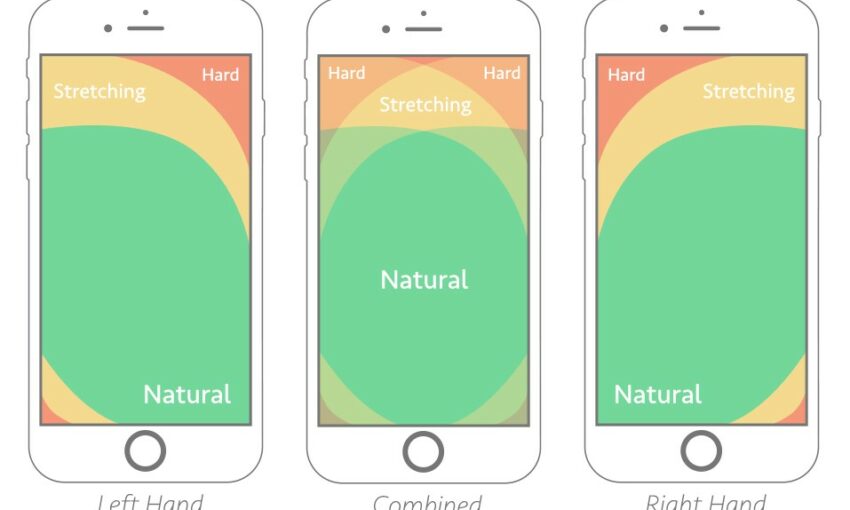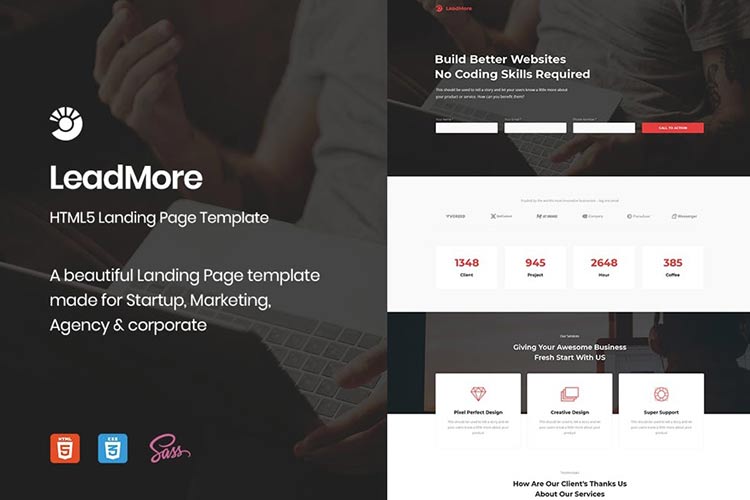One of the most important elements for any online business is a landing page. a landing page is what converts your visitors into leads. In short, it is the heart and soul of any marketer’s lead generation efforts. The big question, however, is how to design a lead page that actually converts.
A landing page, in the purest sense of the word, is just another web page where your visitors can “land” on or arrive at.
Creating a landing page allows you to target a specific audience, offer them something of value, and convert a higher percentage of your visitors into leads, while also capturing information about who they are and what they’ve converted on.
But how do you utilize this? Or rather, how do you create a landing page that generates high conversion?
A Simple Acronym for Success
If you have done a bit of copywriting or involved in marketing and advertising, you might have heard of AIDA. AIDA is not a woman although the name sounds like one. On the other hand, AIDA is a model – a very popular one. AIDA is actually an acronym used by marketers, advertisers, and copywriters and it stands for:
- A- Attention,
- I- Interest,
- D- Desire, and
- A- Action
This acronym has been an essential guide for marketers to target their audience effectively. The most prime examples of using this model are car advertisers. Advertisers in the automotive industry are aware that in order to grab the attention of their consumers, they have to use colors, backgrounds, and themes that would appeal to their target audience.
The same principles also apply to web design and here, we will walk through each point and provide examples to help you design a high converting sales page.
Attention
In web design, or even in any industry, two of the most important things to keep in mind when you want to attract someone’s attention for the first time are generating your audience’s trust and addressing their pain.
When it comes to generating trust, it is always our instinct to observe a person we meet or inspect the place we visit for the first time. Based on that first impression, we begin to form our opinions, prejudices, and fear. For example, it is easier to trust a person in a suit rather than a person in a hoodie.
First impressions may change but it is true that they last as well. This is also the first thing you have to keep in mind when you design or create a landing page.
Are the facts inside your landing page trustworthy? Have you double-checked the information before you put them on your sales page?
When it comes to the visuals and aesthetics, you don’t throw in all the flashy things and colors on your landing page. Instead, keep it clean, elegant, nice, and neat because you don’t want to overwhelm your clients.
Remember, when a client becomes overwhelmed, they become intimidated. When they become intimidated, they run away. So there goes your lead conversion slipping from your hands.
Once you have earned their trust, you can step up to the next level where you have the privilege to address their pain. Keep in mind that your visitor has come across or gotten into your landing or sales page because they have a pain or need. They must have gotten there because of an email or an article they read which is related to what they need or they have searched Google to look for an answer to that need or pain.
“Build Your Own WordPress Site 100% Responsive and Flat”
This headline or ad is intentional and not just thought of randomly because it sounds good. It is, of course, catchy, but mostly it is to address a pain or a need.
Before putting up this headline, we realized that a lot of people want to build their own website – and not just any other site but their own WordPress site, which is flat and responsive. So when the targeted audience see this, the heading will catch their attention and curiosity leading them to know more about what is being offered.
Interest
Attention and interest are different as black and white. Attention piques a person’s interest but it doesn’t mean that when you get someone’s attention, you can keep them interested. Interest, on the other hand, is long term. If you are interested in something, you will be able to do it for a long time no matter how difficult or expensive it is.
Thus, the next step you need to do once you captured your audience’s attention is to keep them interested. How?
By paying attention to your audience’s emotional journey and telling them an authentic story about the success they can have.
Emotional journey is something like a roller coaster ride where you show or address your audience what their pain is – the place where they are in right now- and describe the world where they could be – the world which you can build for them. Then, you show them by creating a bridge between the two worlds. You must be able to show them that you can take them from a place of pain into a place of pleasure.
One example for this is the question we posed in our sales page:
Are you scratching your head wondering how amateur designers or programmers can make powerful modern websites, and be able to sell it to their clients and making their dreams come true?
Here, we show them their place of pain (scratching your head) and the place they want to be (making their dreams come true). When our audience saw that, they become interested how to be able to get to that place in the future.
In order to hold your audience’s interest further, you need to paint a clear picture of the new reality. For example, you can show them that 80 million sites are being served by WordPress. This sends a message that they can actually build almost everything using WordPress.
The second part of catching your audience’s interest is by telling them an authentic story. The story is basically about the how and why of why you built this product or service. People, of course know that the real reason is to make money. However, when they can see that what you are offering will actually address the problem they have, they won’t need any convincing – and you do this by telling them an authentic story.
One example of an article that tells an authentic story is the article we wrote about “Building a Portfolio Website.” We start the article by stating the reason why we wrote the article, which is a real need – a lot of people want a portfolio website for their personal brand. After that, the article showed the readers how we did it and how they can do it as well.
Desire
The next step in building a successful landing page is Desire. In creating desire for your audience, you also need to remember two points – social proof and added bonus.
Social proof is making your visitor feel safe. After you show them that they can cross from one side to another, they want to be assured whether the bridge you’re creating or using is safe. And the best way to assure them, of course, is to show them the proof that the bridge actually works.
For example, to show your audience that WordPress really works is to show them that WordPress is used by big companies, such as BBC, TED, CNN, Dow Jones, Time, and many more.
Another way of social proof is testimonials. When they see that other people who have used your products and services are saying positive things about what you offer, it will put their minds at ease leading them to open up to what you are offering.
After you assure them, the next logical step is to surprise them. Most, if not all, people love surprises – good surprises to be more specific. Surprises also make your visitors or customers feel that you actually care about them and not just concerned about getting their money.
In one of our sales page, we offer several bonuses to our products and services. Below that, our customers can see what added bonus they can get when they enroll in our courses.
Action
Now to the last and most important step, you need to move your audience to action. In order to do this, there are also two things to remember – easy CTA and minimal risk.
When you want to incite people to action, it doesn’t have to sound like you’re Mel Gibson shouting “Freedom” to rally the Scots to fight against the English. It doesn’t even have to be complicated. In fact, your Call to Action should be simple using words that are familiar to your audience. Do not ask a lot of questions unless it is really necessary. Your call to action should be easy and painless.
For us, our Call to Action is by simply telling our visitors to click the “Enroll in Course” button.
If someone is not yet convinced to take the Call to Action, unleash your secret weapon which is to avoid risk.
It is natural for people to always look for an assurance, something they know they can go back to in case they don’t like the place you’re taking them. You have to make sure that you don’t burn the bridge and there’s nowhere for them to turn or run back into when things don’t work out fine.
One way of doing this is by giving them a guarantee. There are many kinds of guarantees you can create, like a 30-Day Money Back Guarantee. In our case, we give our clients a “Double Guarantee” where we return double what they spend when they do not get results after implementing the product we offer. This guarantee, of course, applies if they can prove that they have really used our products.
Conclusion
Creating a high conversion landing page is not complicated but easy. Just keep AIDA in mind, use it as a guide and you’ll never go wrong.
Now lets talk about anatomy of an effective landing page.
This post may contain affiliate links. See our disclosure about affiliate links here.



